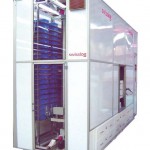The cloud punched me in the nose recently and it’s still a litter tender. I’m a huge proponent of cloud based solutions from simple things like online document collaboration and storage to web-based enterprise SaaS solutions, and I have been slowly migrating my digital life away from the desktop toward the cloud. The cloud and I have been very happy together for well over a year now, but we had out first argument last week and I lost. It’s not serious enough to consider divorce, but it was a wake up call to re-evaluate the relationship.
I use both Live Mesh from Microsoft and Dropbox to manage and synchronize documents on multiple computers. The combination has worked very well for me. I use both applications because I like to try new things; Live Mesh came first followed by Dropbox at the recommendation of my brother.
(more…)





 I’m not a big fan of the using the “best of†model for hospital information systems (HIS). You know, when you buy the best pharmacy system you can find, and the best lab system you can find, and the best ED system you can find, and so on. All this does is create a giant headache for everyone involved because the systems don’t always play nice with each other, which means data gets lost or hijacked between systems by the Interface
I’m not a big fan of the using the “best of†model for hospital information systems (HIS). You know, when you buy the best pharmacy system you can find, and the best lab system you can find, and the best ED system you can find, and so on. All this does is create a giant headache for everyone involved because the systems don’t always play nice with each other, which means data gets lost or hijacked between systems by the Interface